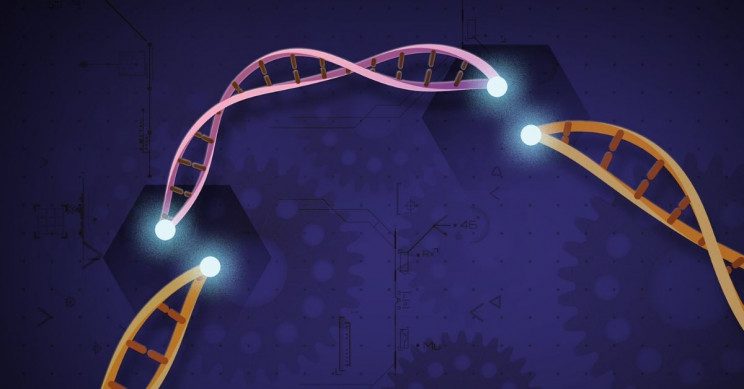Table of Contents
Emmanuelle Charpentier and Jennifer Doudna have been awarded the 2020 Nobel Prize in Chemistry for developing tools to edit DNA.They are the first two women to share a science Nobel. Their discovery, known as CRISPR-Cas9 “genetic scissors”, is a way of making precise changes to the DNA contained in living cells. Not only has the technology been transformative for basic research, but it could also be used to treat inherited illnesses. This Nobel is a huge win for women in science.

The Nobel Prize in Chemistry has been awarded 112 times to 186 Nobel Laureates between 1901 and 2020. Frederick Sanger is the only Nobel Laureate who has been awarded the Nobel Prize in Chemistry twice, in 1958 and 1980.
CRISPR Revolutionizes Gene Editing
This year’s Nobel Prize in Chemistry has been awarded to two scientists who transformed an obscure bacterial immune mechanism, commonly called the CRISPR-Cas9, into a tool that can simply and cheaply edit the genomes of everything from wheat to mosquitoes to humans.
The award went jointly to Emmanuelle Charpentier of the Max Planck Institute for the Science of Pathogens and Jennifer Doudna of the University of California, Berkeley, “for the development of a method for genome editing.” They first showed that CRISPR (which stands for Clustered Regularly Interspaced Short Palindromic Repeats) could edit DNA in an in vitro system in a paper published in the 28 June 2012 issue of Science.
A Patent War May Be Brewing
Their discovery was rapidly expanded on by many others and soon made CRISPR a common tool in labs around the world. The genome editor spawned industries working on making new medicines, agricultural products, and ways to control pests. Many scientists anticipated that Feng Zhang of the Broad Institute, who showed six months later that CRISPR worked in mammalian cells, would share the prize. The institutions of the three scientists are locked in a fierce patent battle over who deserves the intellectual property rights to CRISPR discovery, which some estimate could be worth billions of dollars.

The DNA Scissors: Applications And How They Work
The ability to cut DNA where you want has revolutionized the life sciences. Gene editing could transform biology and medicine with its wide-ranging applications for understanding and treating disease, optimising crops and eradicating pests.
The prize honours a scientific breakthrough that, compared to most recent Nobel-winning work, happened only yesterday: Charpentier published her first important CRISPR paper only in 2011 and met and joined forces with Doudna in March of that year (they met at a scientific conference in Puerto Rico and went for an intense walk on the beach), publishing their seminal paper in 2012.
Their study showed that a bacterial enzyme called Cas9 could cut purified DNA floating (outside of cells) in test tubes. Crucially, Cas9 could be paired with custom-designed molecules called CRISPR-related RNAs that would lead the enzyme to any site on a DNA molecule like a bloodhound leading detectives to a fugitive.
The work unleashed a genome-editing frenzy. Scientists around the world dropped what they had been working on and became genome editors, using the technique to delete or change specific “letters” in DNA much like a word processing program changes the letters of a document. CRISPR allows scientists to edit genes to probe their role in health and disease and to develop genetic therapies that, proponents hope, will prove safer and more effective than the first generation of gene therapies.
Who Run The World (Girls)
The scientific Nobel Prizes – since they were first awarded in 1901 – have overwhelmingly gone to men. Critics say this reinforces potent stereotypes about who does the “best” science, and that the secretive, by-invitation-only nomination process for the Nobels means it is unclear if women and minorities are even getting a fair shot at the honour.
Between 1901 and 2019, 219 individuals had been awarded the Nobel Prize in medicine. Only 12 of them were women, about 5.5%. Meanwhile, in physics, of the 213 people who had won, only three – fewer than 2% – had gone to women. And only five women had ever won a prize in chemistry till 2019.
Donna Strickland won in physics and Frances Arnold won in chemistry, it was considered a banner year for female Nobel Prize winners. The Chemistry Award for 2020 has smashed records and made scientific history as the only science Nobel ever won by two women. It comes after a woman – Andrea Ghez – shared the Nobel Prize in Physics in 2020. In an interview with reporters after the award was announced, Charpentier said that while she considers herself a scientist first, she is happy and a bit shocked that two women won the Nobel.
I think it’s very important for women to see a clear path. I think the fact that Jennifer Doudna and I were awarded this prize today can provide a very strong message for young girls.
Emmannuelle Charpentier